-
EngineTwin-Turbo 3.5L V6
-
Power365 HP / 350 LB-FT
-
Transmission6-Speed Automatic
-
DrivetrainAll-Wheel Drive
-
Engine PlacementFront
-
Curb Weight4,890 LBS
-
Towing5,000 LBS
-
Seating2+3+2
-
Cargo81.7 CU-FT (max)
-
MPG16 City / 22 HWY
-
Base Price$44,445
-
As Tested Price$52,580
The best part about the 2016 Ford Explorer Sport is its engine. Thing is, that's both a compliment and a condemnation.
Ford's 3.5-liter, twin-turbocharged EcoBoost V6 is excellent, with plenty of thrust from its 365 horsepower and 350 pound-feet of torque. The power delivery and torque curve are shockingly linear – there are no peaks or valleys in the engine's performance, just uninterrupted power. This engine feels potent at high rpms, where turbocharged mills sometimes fall flat, and there's a lovely exhaust sound – more robust than what you'd expect from an Explorer, but delicious and just loud enough.
The accompanying six-speed automatic transmission is a worthy companion. In full auto mode, the gearbox is quick to upshift and knows exactly when to select a lower gear. Stab the throttle and there's a smooth, yet quick response, complementing the engine's able character. Things are even better in Sport mode, with snappier shifts and a willingness to hold gears for longer periods of time. Forget about the steering wheel-mounted paddles, though – they aren't pleasant to use.



The Sport trim uses firmer springs and dampers than normal Explorers, and rides on 20-inch wheels. While that'd normally be a recipe for roughness in this heavy CUV, not many competitors are as comfortable as the Ford. No, it doesn't have the smoothest ride in the class, but the Sport does a good job ironing out small bumps and it still feels stable over bigger imperfections. But you'll hear those impacts, especially from the rear suspension. On smooth roads, however, tire and road noise aren't an issue.
But that's where much of the goodness ends. Ford's 2016 model year facelift can't hide a number of longstanding Explorer problems. First, this crossover suffers from a super touchy throttle that's difficult to manage at low speed and on initial tip-in. And even with the modest improvements to the suspension's springs and dampers, there's little hiding the Explorer's weight – it's boat-like, ponderous, and isolated, all adjectives that shouldn't be attached to a vehicle wearing a Sport badge. Ford engineers hastened the steering, going from a 17.1:1 to 15.7:1 ratio, and while turn-in feels quicker and lighter, the steering's sensations are just as isolated as the suspension's. It may be comfortable and compliant in a straight line, but if you really want a CUV that exudes sportiness at all times, wait for the 2017 Mazda CX-9.

The seats are narrow and flat, except on the bottom cushion, where there's too much bolstering. As a whole, the chairs are generally too small, and feel better suited to a Fiesta than an Explorer. Their positioning in the cabin doesn't make sense, either. There's a noticeable span between the seat and the driver's door armrest, so unless you're exceptionally long-limbed, don't plan on comfortably resting your arm while maintaining a grip on the steering wheel. The pedal box is far too small, as well, to the point that we just don't have anywhere to put our left foot. This is not a new issue – you'll run into it on the Explorer's platform mates, the Taurus and Flex – and it's one that seriously needs to be addressed in the crossover's next generation.
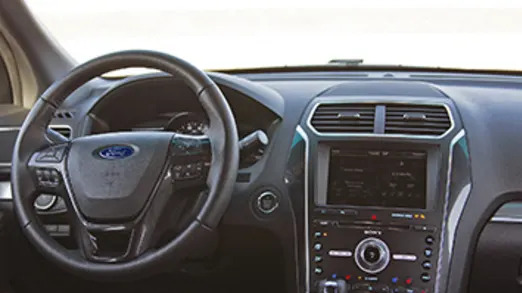

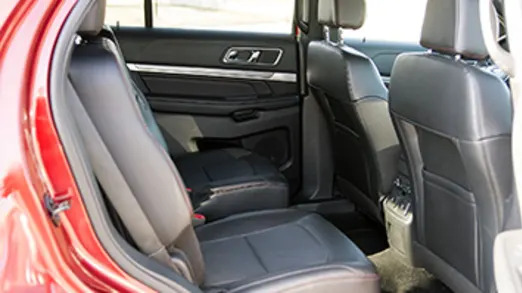
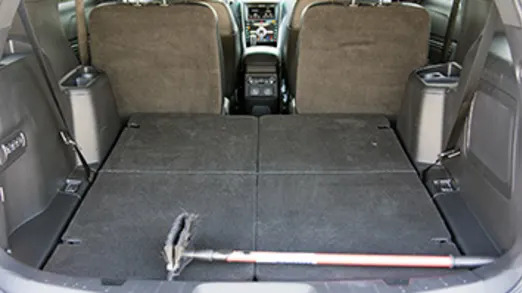
That's not the only opportunity Ford missed with 2016 Explorer. For some reason, there's still the same laggy, unloved version of MyFord Touch in the center console. And after spending a lot of time with Sync 3, the problems of MFT seem even more obvious. Thankfully, the 2016 Explorer's redesigned center stack features actual buttons for many controls, so you don't have to interact with the touchscreen nearly as much as before.
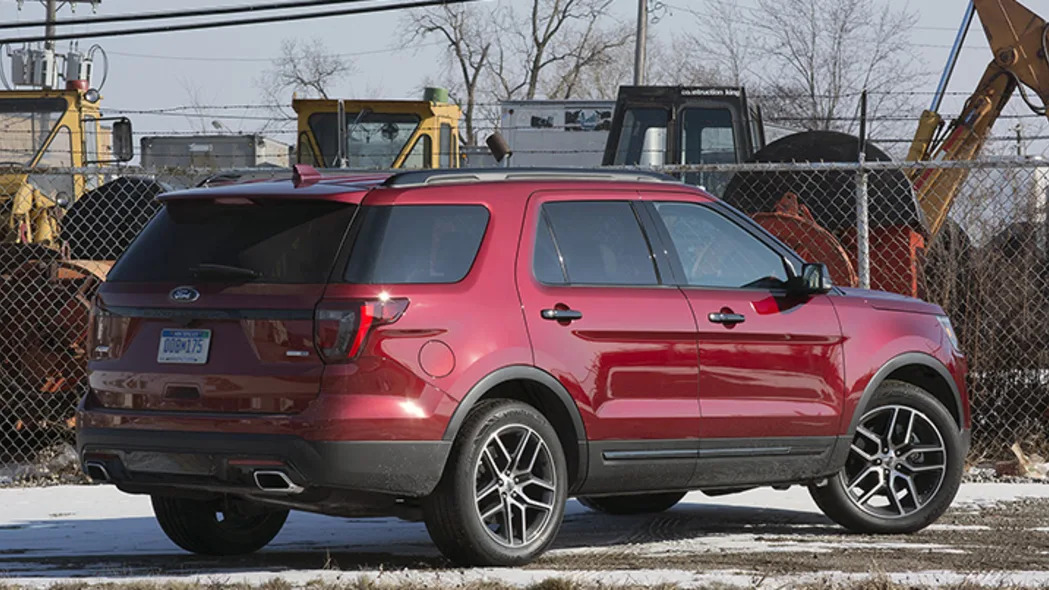
The Explorer Sport's twin-turbo V6 is a hell of a selling point. But taken as a whole, there are better choices in the class. For the power hungry, the Dodge Durango Citadel is a compelling alternative, offering up the same kind of character with better infotainment, a more comfortable driving position, and a better overall steer (plus, a Hemi, thirsty as it may be). And if it's some proper Sport you desire in a three-row CUV, we'll again mention the very lovely Mazda CX-9. It may be powerful, but all that grunt isn't enough to make the Explorer Sport our first choice.
Ford's 3.5-liter, twin-turbocharged EcoBoost V6 is excellent, with plenty of thrust from its 365 horsepower and 350 pound-feet of torque. The power delivery and torque curve are shockingly linear – there are no peaks or valleys in the engine's performance, just uninterrupted power. This engine feels potent at high rpms, where turbocharged mills sometimes fall flat, and there's a lovely exhaust sound – more robust than what you'd expect from an Explorer, but delicious and just loud enough.
The accompanying six-speed automatic transmission is a worthy companion. In full auto mode, the gearbox is quick to upshift and knows exactly when to select a lower gear. Stab the throttle and there's a smooth, yet quick response, complementing the engine's able character. Things are even better in Sport mode, with snappier shifts and a willingness to hold gears for longer periods of time. Forget about the steering wheel-mounted paddles, though – they aren't pleasant to use.



This twin-turbo V6 and six-speed auto partnership provides a good blend of power and efficiency. The Explorer Sport is rated at 16 miles per gallon city and 22 mpg highway, which might not sound great, but is better than a similarly powerful, Hemi V8-equipped Dodge Durango (14 city, 22 highway).Not many competitors are as comfortable as the Ford.
The Sport trim uses firmer springs and dampers than normal Explorers, and rides on 20-inch wheels. While that'd normally be a recipe for roughness in this heavy CUV, not many competitors are as comfortable as the Ford. No, it doesn't have the smoothest ride in the class, but the Sport does a good job ironing out small bumps and it still feels stable over bigger imperfections. But you'll hear those impacts, especially from the rear suspension. On smooth roads, however, tire and road noise aren't an issue.
But that's where much of the goodness ends. Ford's 2016 model year facelift can't hide a number of longstanding Explorer problems. First, this crossover suffers from a super touchy throttle that's difficult to manage at low speed and on initial tip-in. And even with the modest improvements to the suspension's springs and dampers, there's little hiding the Explorer's weight – it's boat-like, ponderous, and isolated, all adjectives that shouldn't be attached to a vehicle wearing a Sport badge. Ford engineers hastened the steering, going from a 17.1:1 to 15.7:1 ratio, and while turn-in feels quicker and lighter, the steering's sensations are just as isolated as the suspension's. It may be comfortable and compliant in a straight line, but if you really want a CUV that exudes sportiness at all times, wait for the 2017 Mazda CX-9.

Moving inside, we'd like to know what sort of driver Ford envisioned behind the wheel of the Explorer when it came time to design the cockpit. Based on the seat and driving position, we think this hypothetical person has size six shoes, a 24-inch waist, and the shoulders of an NFL linebacker. So imagine what happened when your six-foot, one-inch author, his size 13 shoes, and 34-inch waist got behind the wheel.There's little hiding the Explorer's weight – it's boat-like, ponderous, and isolated.
The seats are narrow and flat, except on the bottom cushion, where there's too much bolstering. As a whole, the chairs are generally too small, and feel better suited to a Fiesta than an Explorer. Their positioning in the cabin doesn't make sense, either. There's a noticeable span between the seat and the driver's door armrest, so unless you're exceptionally long-limbed, don't plan on comfortably resting your arm while maintaining a grip on the steering wheel. The pedal box is far too small, as well, to the point that we just don't have anywhere to put our left foot. This is not a new issue – you'll run into it on the Explorer's platform mates, the Taurus and Flex – and it's one that seriously needs to be addressed in the crossover's next generation.




Nothing about the Sport's interior feels special, or exclusive. On the other hand, with the Explorer Platinum, Ford went out of its way to make big changes to the cabin. The top-end model gets handsome seats with neat leather stitching, embroidered "Platinum" branding on the seatback, wood trim on the steering wheel, Platinum-specific door inserts, and a totally revamped, more functional, and far more attractive instrument cluster. These aren't dramatic changes, but they serve to distinguish the Explorer Platinum from lower-end trims. Ford had an opportunity to do something similar with the Sport, but instead, the only differences between it and lesser models are the red contrast stitching on the seats and steering wheel, and the thin strips of faux carbon-fiber on the dash and doors. All in, the cabin feels wholly unremarkable from behind the wheel. At least Ford made up for this shortcoming by adding lots of gloss black accents to the exterior – you might not notice the Sport stuff inside, but from outside, this is definitely the most distinctive of the Explorer models.For some reason, there's still the same laggy, unloved version of MyFord Touch in the center console.
That's not the only opportunity Ford missed with 2016 Explorer. For some reason, there's still the same laggy, unloved version of MyFord Touch in the center console. And after spending a lot of time with Sync 3, the problems of MFT seem even more obvious. Thankfully, the 2016 Explorer's redesigned center stack features actual buttons for many controls, so you don't have to interact with the touchscreen nearly as much as before.

Prices for the Explorer Sport start at $44,445, including $945 for destination. But take our advice and add the $4,300 401A package. This adds a heap of desirable options, including navigation, blind-spot monitoring, a heated steering wheel, heated/cooled leather seats, and a 180-degree forward camera, in addition to minor niceties like a universal garage door opener, ambient lighting, and power-folding mirrors. Our test car also adds the $1,595 panoramic sunroof, the $1,150 adaptive cruise and forward collision warning pack, second-row captain's chairs ($695), and the handsome Ruby Red paint ($395), for an as-tested price of $52,580.It may be powerful, but all that grunt isn't enough to make the Explorer Sport our first choice.
The Explorer Sport's twin-turbo V6 is a hell of a selling point. But taken as a whole, there are better choices in the class. For the power hungry, the Dodge Durango Citadel is a compelling alternative, offering up the same kind of character with better infotainment, a more comfortable driving position, and a better overall steer (plus, a Hemi, thirsty as it may be). And if it's some proper Sport you desire in a three-row CUV, we'll again mention the very lovely Mazda CX-9. It may be powerful, but all that grunt isn't enough to make the Explorer Sport our first choice.
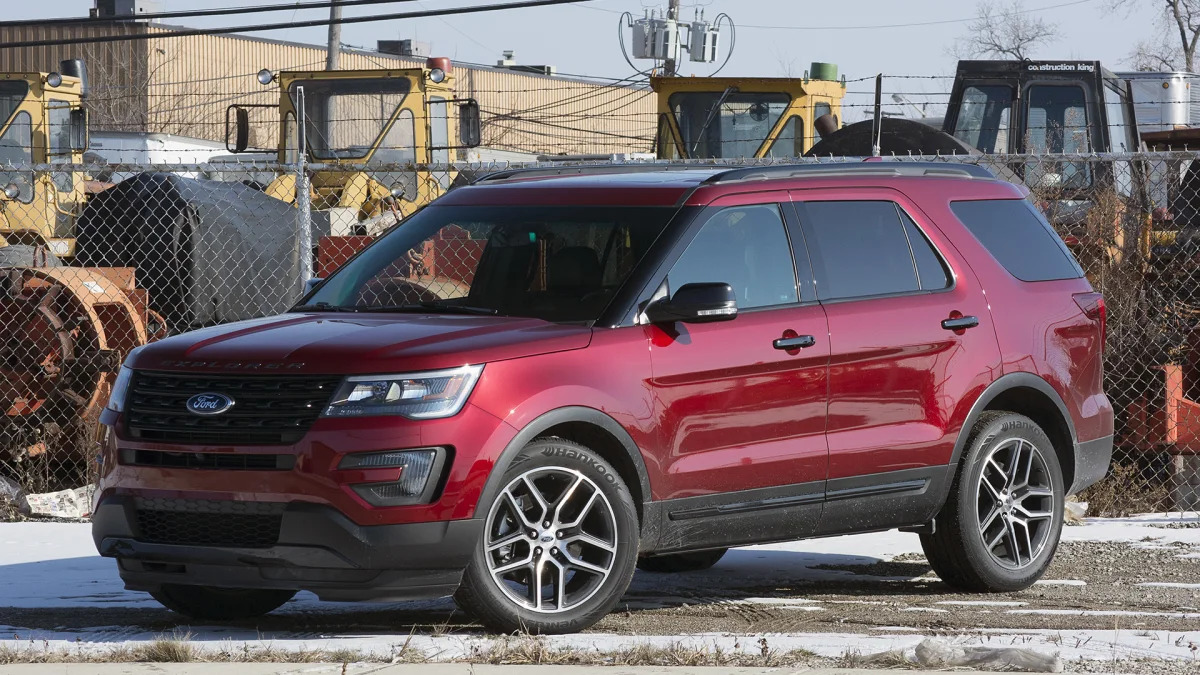









Sign in to post
Please sign in to leave a comment.
Continue